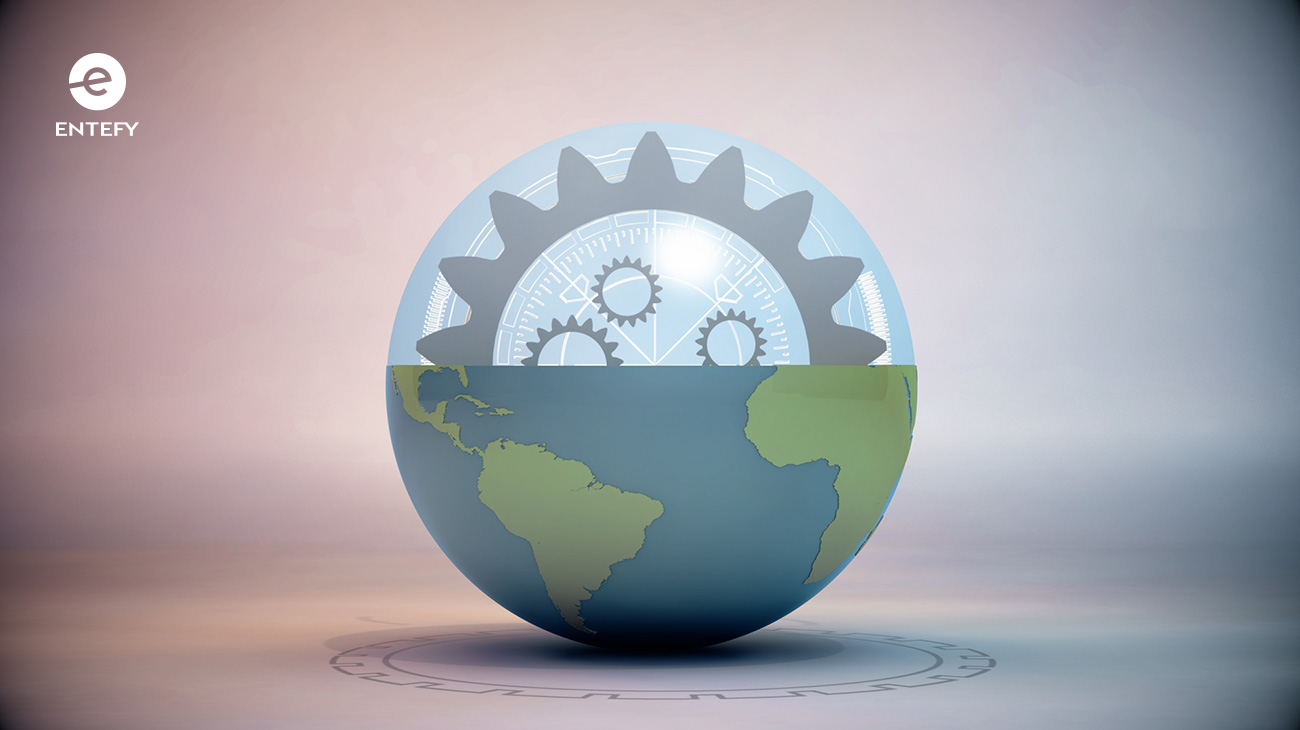AI augmentation is expected to generate $2.9 trillion in value by 2021, freeing up 6.2 billion hours of worker productivity in the process. Within the AI category, machine learning attracted about 60% of the estimated $8 to $12 billion in external investment in AI capabilities during 2016. Machine learning’s outsized role comes in large part from its usefulness in enabling other capabilities, like robotics, process automation, and speech recognition. Not surprisingly, machine learning sits squarely at the center of digital transformation strategies the world over.
Entefy recently shared a look at ML innovation in 8 different industries. Below we continue our survey of noteworthy machine learning projects, this time in verticals as diverse as banking, nonprofits, energy, and government.
Banking
Machine learning analytics programs offer banks the potential to increase profits substantially. One report found that companies that invested in advanced analytics saw an average profit increase of approximately $369,000,000 a year. They achieve this by making better use of their customer data.
By analyzing client behavior, one institution learned when to intervene before customers disengaged from the company, leading to a 15% reduction in churn. Other organizations used the insights gleaned through machine learning programs to identify new segments within its existing customer base and phase out costly, unnecessary discount practices. Machine learning programs “discover” hidden trends and insights that companies can use to strategize more effectively.
Energy
Deep and machine learning will prove invaluable to combatting climate change and achieving more efficient energy usage. Companies are already using machine learning to sell solar panels in more cost-efficient ways, while researchers predict that cloud-based monitoring systems will be able to optimize energy usage in real time.
Machine learning could also help tech companies reduce their carbon footprints, optimizing energy usage according to a variety of conditions and ultimately decreasing their power draws by up to 15%. This is will be of growing importance as rising demands for computing power raise serious environmental concerns.
Healthcare
With the global medical community facing a shortfall of more than 4 million medical providers, it’s clear that the healthcare system needs help. As Entefy wrote last year, artificial intelligence is here to help doctors. Researchers are exploring the use of machine learning to diagnose disease, a breakthrough that could lead to faster, more accurate patient treatments.
One group of researchers used machine learning to predict whether patients would be hospitalized due to heart disease. They achieved an 82% accuracy rate, which was 26% percent higher than the average rate using one of the most common existing prediction models. Identifying a patient’s risk for heart disease and hospitalization could allow doctors to make life-saving recommendations before the condition reaches a critical stage.
Retail
Machine learning makes for a more dynamic and interactive retail experience. Instead of wandering store aisles for hours searching for the right tool or outfit or home appliance, home makeover businesses are embracing artificial intelligence to create more personalized – and convenient – brand encounters.
One company used machine learning to create a tool for better home decorating. Customers will soon be able upload photos of their homes and see realistic simulations of what different shades of paint, pieces of furniture, and light fixtures would look like in their living rooms. No more guesswork, no more aggravating trips to the store because you bought the wrong shade of paint. Thanks to machine learning, you could be sure to get it right the first time.
Government
Machine learning could make the country safer and more equitable, and that’s not just idealism talking. A 2017 study found that a machine learning algorithm was more adept than judges at predicting which defendants were flight risks while awaiting trials. The program assigned risk scores based on details such as defendants’ ages, their rap sheets, the offenses for which they were awaiting trial, and where they had been arrested.
Researchers determined that the program could decrease the number of defendants in jail while awaiting trial by 40% without risking an increase in crime rates. Widespread use of such algorithms would alleviate strains on the criminal justice systems and could even prevent future crimes. The program’s accuracy would serve as a safeguard against judges’ erroneous decisions, as the defendants they release sometimes commit additional crimes before their trials or fail to appear for their court dates.
Nonprofit
Nonprofits are using machine learning to identify trends related to mental health crises, such as indicators for suicide. Importantly, machine learning can make connections that humans might not see, and that information enables crisis counselors to reach people who are in urgent need. In one example, a machine learning program identified that the term “ibuprofen” was a likelier indicator of an imminent threat than the term “suicide.” Therefore, the computer program prioritizes users who have mentioned ibuprofen in their communications to ensure they reach a counselor as quickly as possible.
If you’re just getting up to speed on artificial intelligence, be sure to check out Entefy’s article Essential AI: A brief introduction to terms and applications.
